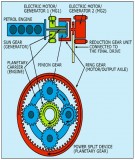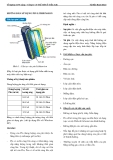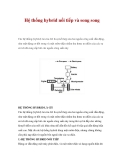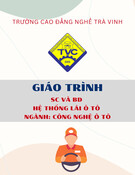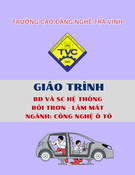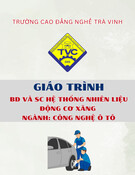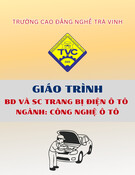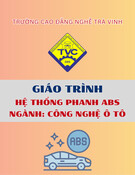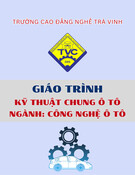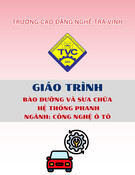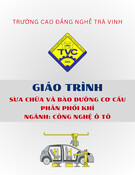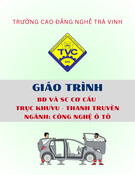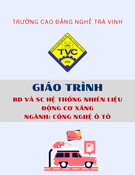
http://www.iaeme.com/IJMET/index.asp 1117 editor@iaeme.com
International Journal of Mechanical Engineering and Technology (IJMET)
Volume 10, Issue 03, March 2019, pp. 1117-1126. Article ID: IJMET_10_03_114
Available online at http://www.iaeme.com/ijmet/issues.asp?JType=IJMET&VType=10&IType=3
ISSN Print: 0976-6340 and ISSN Online: 0976-6359
© IAEME Publication Scopus Indexed
TEMPERATURE CONTROL SYSTEM FOR
RANGE OPTIMIZATION IN ELECTRIC
VEHICLE
R. Angeline
Department of Computer Science and Engineering, Faulty of Computer Science and
Engineering, SRM Institute of Science and Technology, Chennai, India
Sahitya. P
Department of Computer Science and Engineering, SRM Institute of Science and Technology,
Chennai, India
Swathi. S
Department of Computer Science and Engineering, SRM Institute of Science and Technology,
Chennai, India
Chethan. T. S
Department of Computer Science and Engineering, SRM Institute of Science and Technology,
Chennai, India
Shivani. L
Department of Computer Science and Engineering, SRM Institute of Science and Technology,
Chennai, India
ABSTRACT
In this paper, we propose a mechanism to optimize range of EV by integrating some
of the best methods to estimate rotor position, efficient temperature control modules and
machine learning algorithms that analyze the vehicle’s environment and driving
pattern. A simulation of an EV model with the above-mentioned modules is presented
through Simulink. The result of this simulation is compared with the result of simulation
with the same modules but with Machine Learning Algorithms integrated. A
comprehensive comparison analysis is then presented to show how range of an EV
improves as the machine learns.
Keywords: Simulink, Reinforced Learning, Electric Vehicle, Q Learning,
TD(λ)Learning.

R. Angeline, Sahitya. P, Swathi. S, Chethan. T. S and Shivani. L
http://www.iaeme.com/IJMET/index.asp 1118 editor@iaeme.com
Cite this Article: R. Angeline, Sahitya. P, Swathi. S, Chethan. T. S and Shivani. L,
Temperature Control System for Range Optimization in Electric Vehicle, International
Journal of Mechanical Engineering and Technology, 10(3), 2019, pp. 1117-1126.
http://www.iaeme.com/IJMET/issues.asp?JType=IJMET&VType=10&IType=3
1. INTRODUCTION
The exponential depletion of petroleum and natural gas has prompted an aggressive research
and development to manufacture electric vehicles (EV). A major concern in EVs is to optimize
range because of the following reasons 1. Infrastructure to charge batteries is insufficient. 2. It
takes 30-40mins to charge a vehicle. 3. Resources required to manufacture the battery unit are
also limited. Hence the need to optimize range is required to ensure longevity of the EV’s
battery.
Several methods have been proposed to estimate rotor position, thus, eliminating the need
to have heavy mechanical sensors. One of the methods implements Machine Learning to
estimate position of rotors in EV by using phase current and voltage as their data points [3].
Other methods concentrate on carrier signal injection based sensorless control techniques at
zero and low speeds or on improved dynamic models of Permanent Magnet Synchronous Motor
(PMSM) drives. The former methods are hindered by saturation effects and signal injection
leads to unwelcomed torque ripples. In latter methods, the dependency on back-emf results in
inaccurate estimation of rotor position at very low and zero speeds.
The influence of environment temperature on battery of EVs has been extensively studied
through a number of tests like Electrochemical Impedance Spectroscopy test and Dynamic
Driving test thus, reaching a conclusion that at low temperature, a number of events like DC
internal resistance and polarization effect are the main factors that limits the battery
performance [4]. Experiments on 50A.h Lithium-iron phosphate batteries under temperature
range of minus 40°C - 40°C have been carried out to analyze the influence of environment
temperatures on voltages, internal resistance, efficiency and life cycle of battery while charging
and discharging [5].
Research has also been conducted to dynamically equalize the temperature of all battery
cells (especially Li-ion batteries) in a package because focusing on average temperature of the
battery package rather than each battery cell in the package has resulted in wear-out, uneven
temperature distribution and has affected the safety standards of the battery cells [6].
Furthermore, temperature variation degrades torque accuracy and efficiency of IPMSM
machines and hence, compensation control algorithm is shown to save energy and improve
efficiency.
In this paper, we propose a mechanism to optimize range of Electric Vehicle by integrating
some of the best methods that focus on controlling battery temperature and ML algorithms that
analyze the road conditions, driving pattern, ambient temperature and wind speed to estimate
an accurate torque for the EV. ML algorithm is also proposed to estimate the power required to
cool down the battery, which further increases the range in EVs. A simulation of an EV model
that integrates battery temperature control module is presented through Simulink. The result of
this simulation is compared with the result of that with ML algorithms integrated. A
comprehensive comparison analysis is then presented to show how range of an EV improves as
the machine learns.

Temperature Control System for Range Optimization in Electric Vehicle
http://www.iaeme.com/IJMET/index.asp 1119 editor@iaeme.com
2. SYSTEM ARCHITECTURE
Figure 1 System Architecture
2.1. Input
The Input module includes the following parameters: Inclination (Degree), Wind Speed(m/s),
Brake Pedal(on/off), Throttle ([0,1]), Cruise Enable(on/off), Cruise Disable(on/off),
Environment Temperature(˚C). These signals are generated by the Signal builder Block in
Matlab Simulink. Of these parameters, Inclination, Wind Speed and Brake Pedal are joined to
form a single bus unit called TD (Test Data) which is then sent to the Vehicle Dynamics module.
Finally, the signals other than Inclination and Wind Speed are sent to the Vehicle Control Unit.
2.2. Vehicle Control Module
The Vehicle Control unit consists of three main factors: Cruise Control, Torque Demand
Management, Feed Forward Torque. The Cruise Control is obtained using the cruise enable,
cruise disable, brake pedal and motor speed, these are connected to a J-K Flipflop to determine
if the Cruise has been enabled or disabled. If the result is found to be enabled then a torque
termed 'trqref' is generated. The Torque Demand Management is the torque obtained by
combining the outputs from acceleration pedal and brake pedal. The Feed Forward Torque is
the torque obtained as a result of the combination of positive and negative torque energies. The
positive torque energy is obtained when the vehicle is moving downhill. In this case there is no
need to explicitly provide energy by pushing down on the accelerator, since the vehicle moves
with respect to the mass of the vehicle and the gravity of the earth. On the other hand, pressing
the brake pedal while moving downhill creates a negative torque energy. The resultant torque,
which is a combination of Feed Forward Torque and the reference torques from the other two
units, is then forwarded to the speed controller switch which in turn generates a reference torque
depending on the output from the Cruise Control unit. The parameter required to calculate the
reference torques resulting from the three units is the motor speed, which is obtained from the
PMSM drive. The one other usage of motor speed is in the calculation of maximum power.

R. Angeline, Sahitya. P, Swathi. S, Chethan. T. S and Shivani. L
http://www.iaeme.com/IJMET/index.asp 1120 editor@iaeme.com
Figure 2 Vehicle Control Module
2.3. Final Drive Ratio and Vehicle Dynamics
The Final Drive Ratio is the last bit of gearing between your transmission and the driven wheels.
Altering this ratio will certainly affect the performance of the vehicle, rather drastically in some
cases. In general, when the final drive ratio is on the lower end it leads to less torque at the
wheels but a higher top speed. On the other hand, a higher drive ratio leads to more torque at
the wheels but a lower top speed. Since the torque helps in the acceleration, a higher final drive
ratio will thus result in the enhancement of the acceleration. This implies that the engine would
produce more revolutions, for a given speed, so the higher the final drive ratio the higher the
fuel consumption. This module is connected to the Vehicle Dynamics unit. Using parameters
such as the gear ratio, wind, inclination, brake pedal and mass of the vehicle, the stress induced
on the motor is calculated.
Figure 3 Vehicle Dynamics Module
2.4. Cooling System
In electric cars, battery discharge results in heat generation; more the battery gets discharged,
more the heat is produced. Batteries are manufactured to work only between certain temperature

Temperature Control System for Range Optimization in Electric Vehicle
http://www.iaeme.com/IJMET/index.asp 1121 editor@iaeme.com
extremes, so the moment the temperature strays from the working range, it will stop working;
in order to avoid that, we need cooling system. Cooling systems need to be able to keep the
battery pack in the temperature range, i.e. between the max and min battery temperature. Other
than this it also needs to keep the temperature difference within the battery pack to a minimum
(no more than 5 degrees Celsius). The output from this module, which is the battery
temperature, is then given to the PMSM(DC) drive to cool down the motor.
Figure 4 Cooling System Module
2.5. Battery
The battery unit consists of the BattSoc, BattVol, BattCurr, BattAH, BattPwr, BattCrnt and
BattTemp. The BattVol and BattCurr refers to the Battery Voltage and Battery Current.
BatteryAH refers to the amount of power residing inside the battery which is the stored energy.
The percentage representation of this value is referred to as BattSoc. The BattPwr is the amount
of power that is consumed by the vehicle at that instance. The BattCrnt is the current passed
onto the battery unit by the PMSM Drive. A thermometer is used to estimate the BattTemp
which is the battery temperature in terms of kelvin. The above described terms are further sent
to the BatteryStats which displays the BattSoc, BattTemp and BattPwr values onto the screen.
Figure 5 Battery Module
2.6. Permanent Magnet Synchronous Motor (PMSM)
PMSM (Permanent magnet synchronous motor) is similar to brushless DC motors. This is used
for the propulsion of the vehicle. This module is connected to the battery and cooling circuits,
which powers and cools the motor respectively. Reference torque demand, the torque required
at the rotor, is referred from VCM. The Mechanical rotational conserving port of the motor is
connected to the vehicle dynamics module which gives the torque acting on the rotor. The rotor
speed from PMSM is sent to VCM for torque demand calculations.



